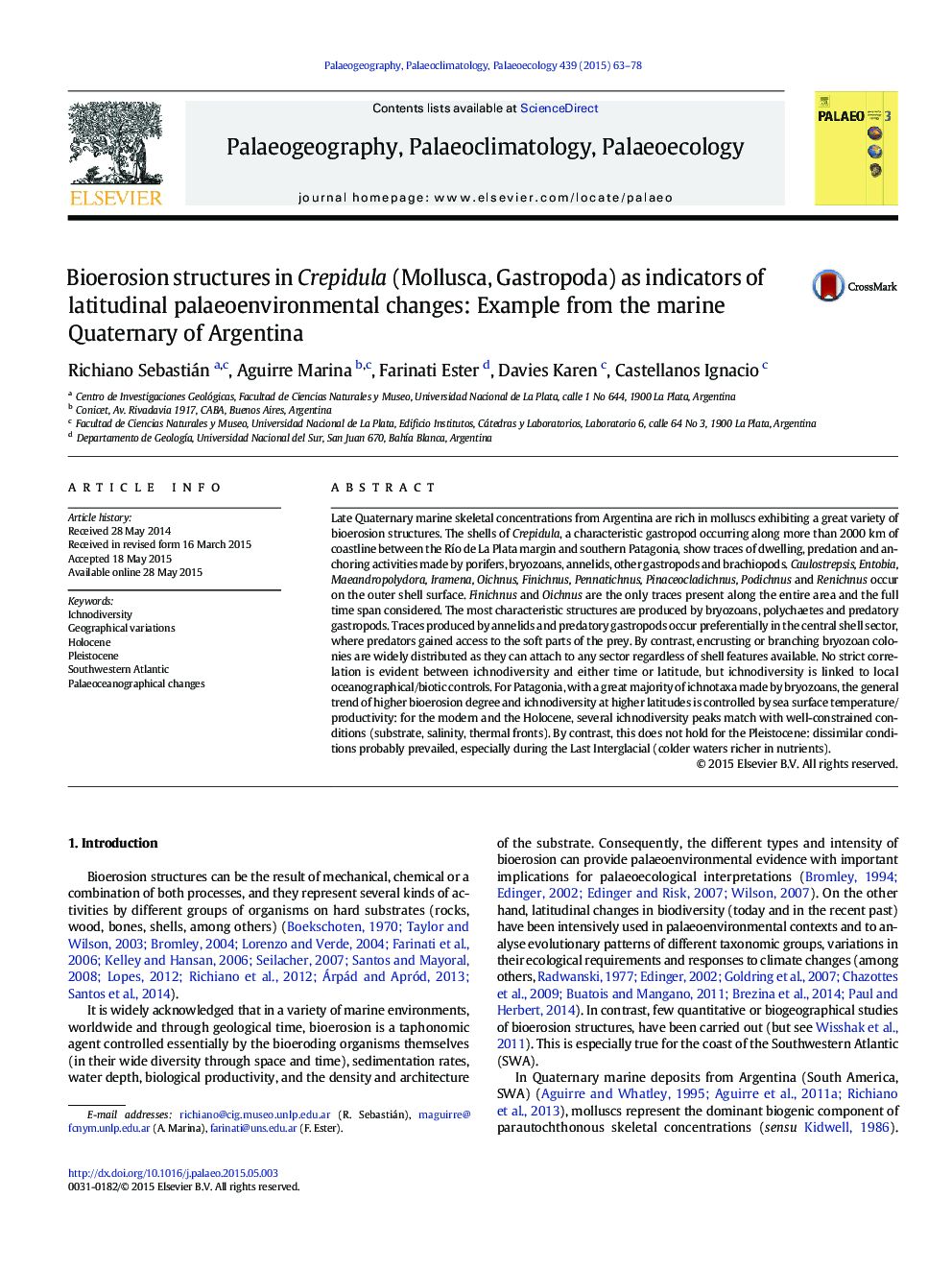| Article ID | Journal | Published Year | Pages | File Type |
|---|---|---|---|---|
| 4465871 | Palaeogeography, Palaeoclimatology, Palaeoecology | 2015 | 16 Pages |
•We examine latitudinal (SWAtlantic) and temporal (Quaternary) patterns of bioerosion.•Patterns are linked to biological, environmental and oceanographical factors.•SST and productivity are the main controlling factors for bryozoan's activity.
Late Quaternary marine skeletal concentrations from Argentina are rich in molluscs exhibiting a great variety of bioerosion structures. The shells of Crepidula, a characteristic gastropod occurring along more than 2000 km of coastline between the Río de La Plata margin and southern Patagonia, show traces of dwelling, predation and anchoring activities made by porifers, bryozoans, annelids, other gastropods and brachiopods. Caulostrepsis, Entobia, Maeandropolydora, Iramena, Oichnus, Finichnus, Pennatichnus, Pinaceocladichnus, Podichnus and Renichnus occur on the outer shell surface. Finichnus and Oichnus are the only traces present along the entire area and the full time span considered. The most characteristic structures are produced by bryozoans, polychaetes and predatory gastropods. Traces produced by annelids and predatory gastropods occur preferentially in the central shell sector, where predators gained access to the soft parts of the prey. By contrast, encrusting or branching bryozoan colonies are widely distributed as they can attach to any sector regardless of shell features available. No strict correlation is evident between ichnodiversity and either time or latitude, but ichnodiversity is linked to local oceanographical/biotic controls. For Patagonia, with a great majority of ichnotaxa made by bryozoans, the general trend of higher bioerosion degree and ichnodiversity at higher latitudes is controlled by sea surface temperature/productivity: for the modern and the Holocene, several ichnodiversity peaks match with well-constrained conditions (substrate, salinity, thermal fronts). By contrast, this does not hold for the Pleistocene: dissimilar conditions probably prevailed, especially during the Last Interglacial (colder waters richer in nutrients).
